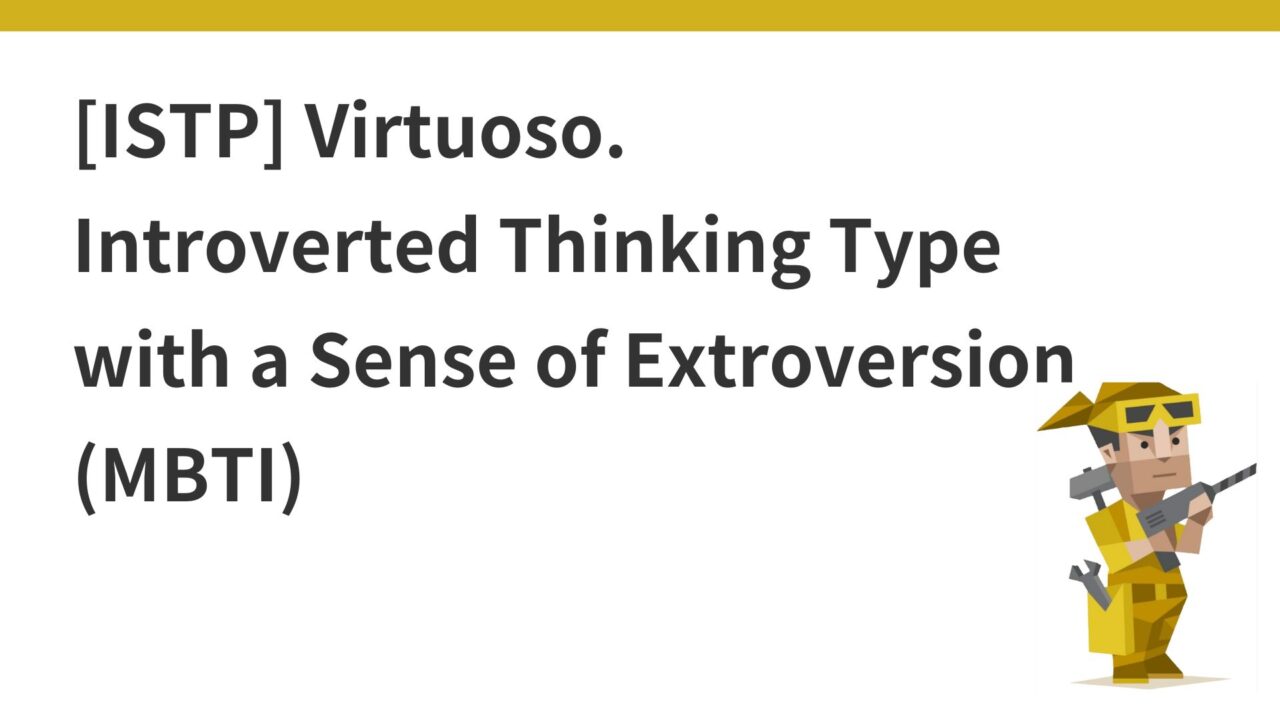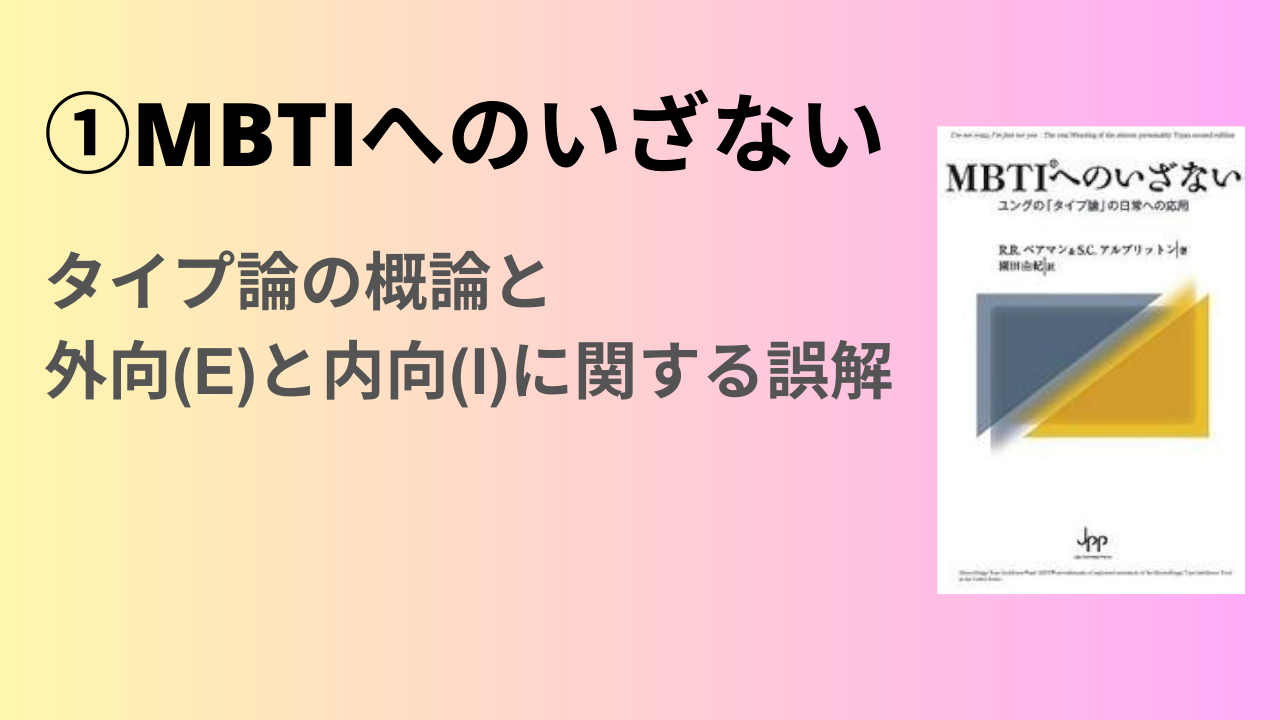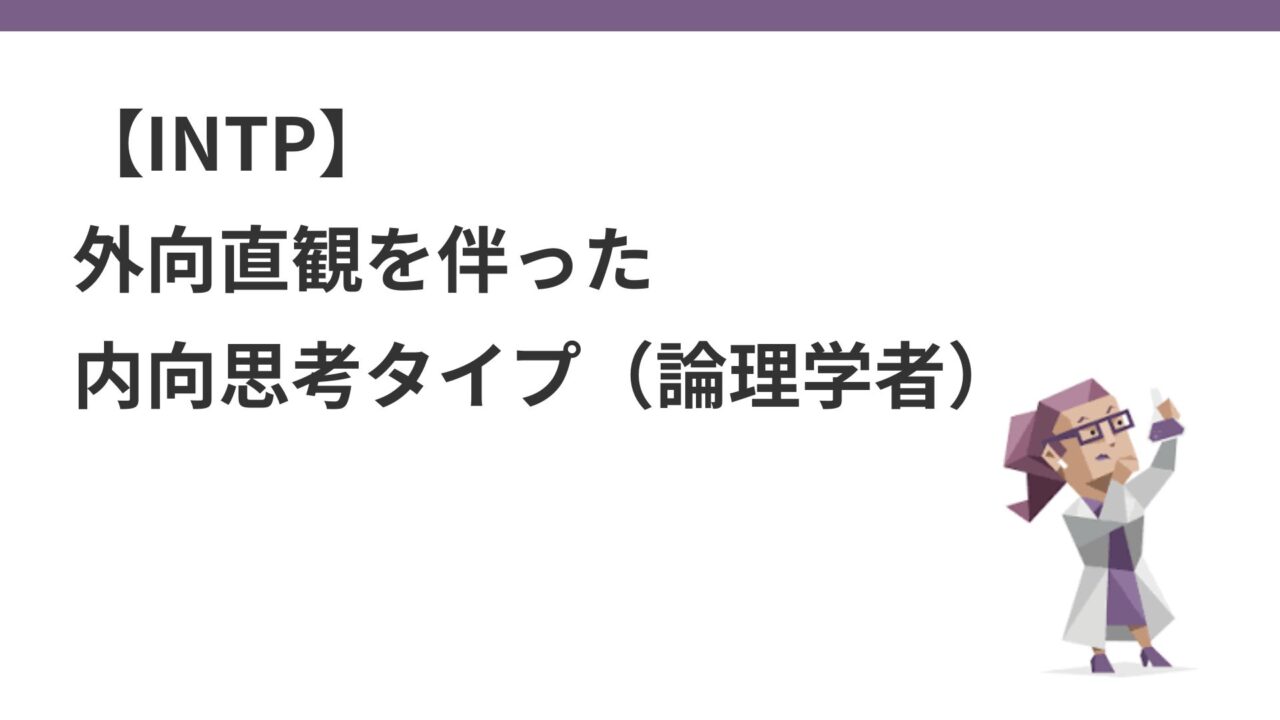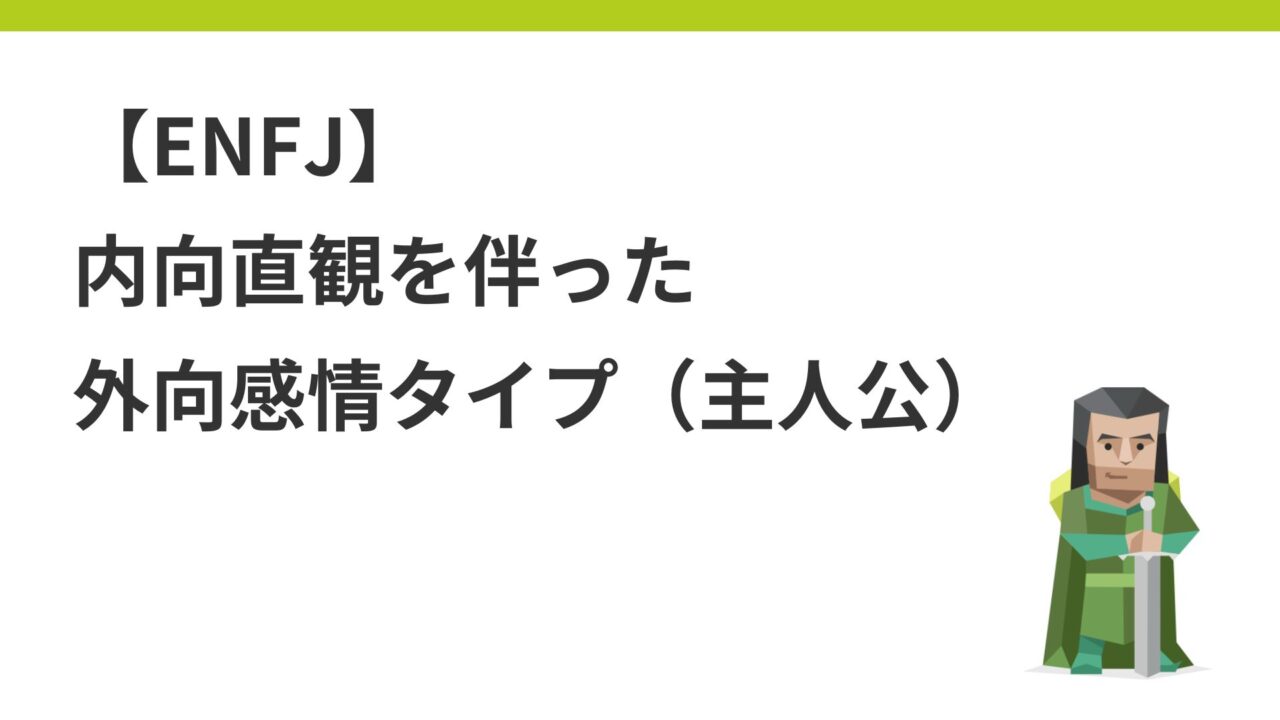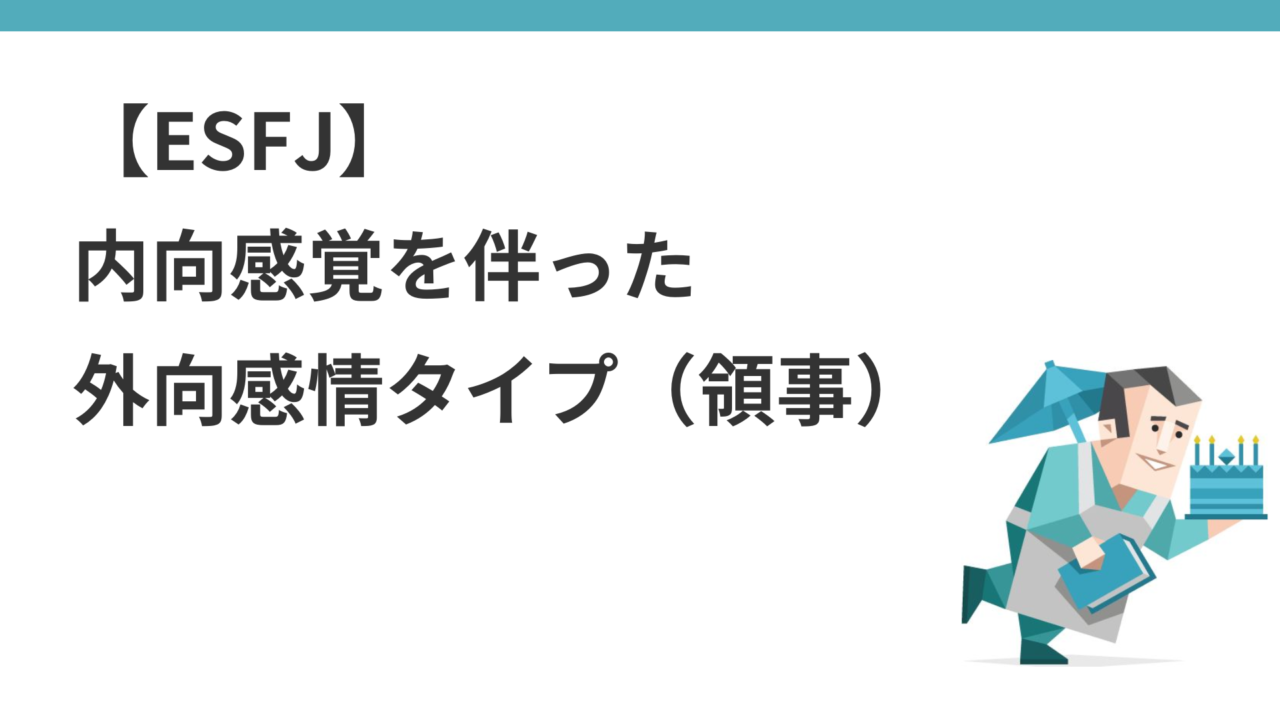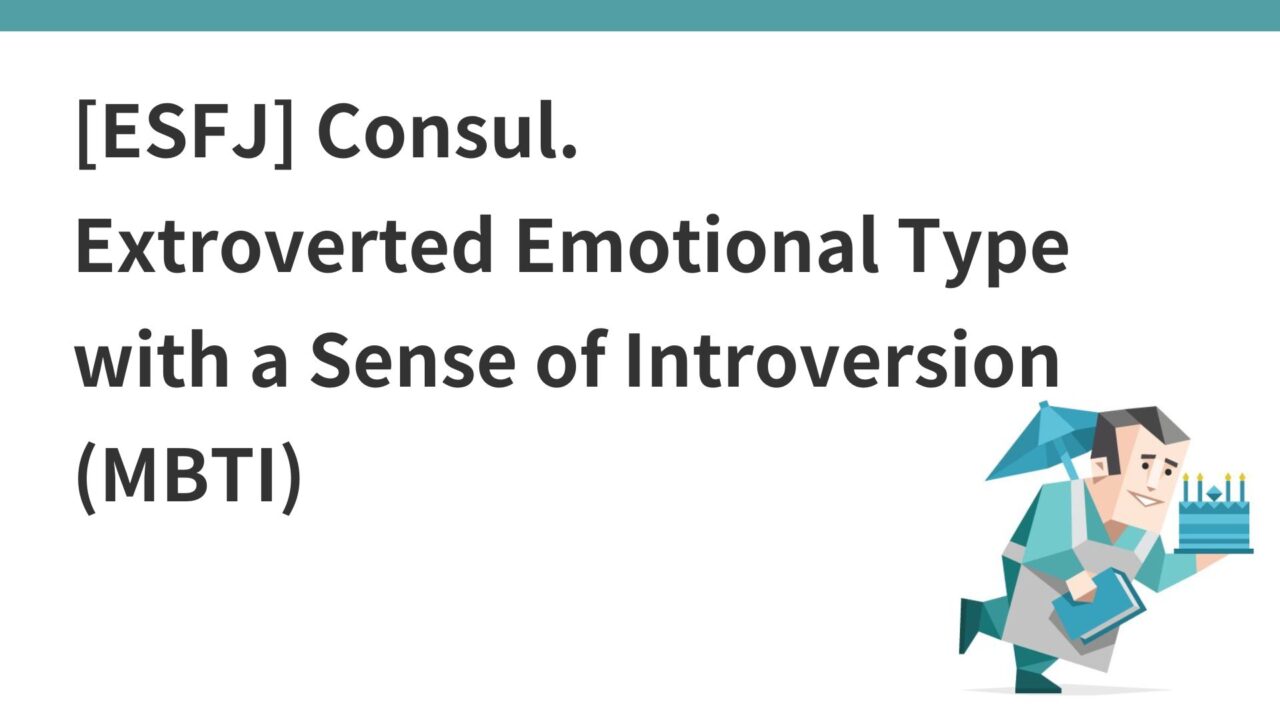- Introduction.
- Public’s impression of ISTP
- Ti-Se: introverted thinking type with extroverted sensation
- Characteristics and decision-making process for primary and auxiliary functions
- Difference between ISTP and INTP
- Impression of ISTP’s surroundings: realistic rationalism
- To reinforce the extroverted feelings (Fe) of inferior function
- Communication Features
- Reactions during stress and points for improvement
Introduction.
I will summarize the following perspectives on each MBTI personality type.
- Public Impressions
- Characteristics of the primary and auxiliary functions and the decision-making process
- Impression to the surroundings
- Inferior Functions and How to Enhance Inferior Functions
- Communication Features
- Reactions during stress and points for improvement
In this issue, we discuss the ISTP.
Public’s impression of ISTP
If you Google ISTP, related searches include “ISTP alone”, “ISTP artisan”, and “ISTP curious”.
He has been called a “maestro,” and his celebrity/characters include Michael Jordan, Tom Cruise, and Jack Bauer.
By the way, “maestro” means “a great master in a specialized field, especially in the arts.
Ti-Se: introverted thinking type with extroverted sensation
Cognitive functions of ISTP are in order of development as follows
- Primary function (the function you are most aware of): introverted thinking (Ti)
- Auxiliary functions (functions that function well but are difficult to notice by themselves): extroverted sensation (Se)
- Third function: introverted intuition (Ni)
- Inferior function: extroverted affect (Fe)
The following is a brief description of how each cognitive function affects an individual’s perception and behavior
| cognitive function | Inward (i) | Outgoing (e) |
| Intuition (N) | Pattern recognition – inner insights and future predictions | Explore new possibilities – ideas and abstract concepts |
| Thinking (T) | Logical analysis – building internal theories and organizing thoughts | Objective judgment – decision making for efficiency and fairness |
| Emotion (F) | Deep empathy – a deep understanding of personal feelings and values | Social harmony – forming emotional connections with others |
| Sensation (S) | Details of reality – reflection of inner concrete memories and experiences | Actual experience – direct interaction and action with the outside world |
Ti-Se: Realistic Rationalist. Logically analyzes situations and problems to find practical real-world solutions.
Characteristics and decision-making process for primary and auxiliary functions
Introverted Thinking (Ti): Logical Analysis The main function of ISTPs, introverted thinking (Ti), focuses on logical analysis and internal theory building; ISTPs understand things systematically and seek internal logical consistency. When solving problems and making decisions, they are objective and based on data and facts.
Extroverted Sense (Se): realistic responsiveness The subsidiary function, extraverted senses (Se), is sensitive to concrete facts and situations in reality; ISTPs focus on direct experience through the five senses and react quickly to concrete information and changes in the real world. This allows them to take practical and immediate action.
When the ISTP takes on a new project, it first conducts a detailed analysis of the project’s requirements and objectives using Ti, and logically considers the resources and procedures needed. Data is collected and an internal model is built to find the most efficient way forward. Then, using Se, take immediate concrete actions based on the real situation. For example, prepare the necessary tools and actually work hands-on on the project. Adapt flexibly to changes in the field and find practical solutions.
Difference between ISTP and INTP
Both ISTPs and INTPs have introverted thinking (Ti) as their primary function and are therefore logical and analytical in nature, but due to differences in their auxiliary functions, they take contrasting approaches: ISTPs are realistic and action-oriented, while INTPs are abstract and future-oriented.
ISTPs react quickly to changes in reality due to their extroverted senses (Se) and are flexible enough to respond to new situations and urgent problems. On the other hand, INTPs, due to their extroverted intuition (Ne), consider many possibilities and may take longer to react, but can find creative solutions.
Impression of ISTP’s surroundings: realistic rationalism
- Calm and Objective: The person has a calm and objective point of view, unaffected by emotions, and is evaluated as being able to make fair judgments.
- Independent-minded: self-contained and independent, they are easily respected as self-reliant individuals.
- Adventurous: Adventurous in seeking new experiences and challenges and unafraid to take risks. Willing to venture into uncharted territory.
- Ability to execute quickly: High ability to analyze dispassionately and find immediate solutions, and fast speed in putting them into practice. Able to make quick decisions and take action immediately.
- Little emotional expression: They do not show much emotion, which can give the impression of being cold. They may appear indifferent to other people’s emotions. However, just because they do not show much on the outside, they have emotional ebbs and flows on the inside, and unexpected events or stress can cause them to become emotionally unstable.
- Lacks communication: introverted and prefers to be alone, tends to lack communication with others. Information sharing may be perceived as insufficient.
My impression is that the term “tough loner” best describes this type.
Perhaps it is the combination of unique cognitive functions, but along with INTJs, there is a sense of enigmatic aspect to them.
The degree to which he does not want to be bound by rules and regulations is the highest among MBTI’s. Although he has considerable emotional ebbs and flows on the inside, he rarely shows them on the outside and is often seen as a rational and calm person. They would not fit into the organizational culture of a large Japanese company in terms of rules, regulations, and socializing. I feel like a lot of freelancers.
He is usually alone, does not interfere much with others, and does not say much in the way of affirmation or criticism, but he also has a high degree of black jokes and self-deprecation at a moment’s notice. In my head, I feel like my emotions and thoughts are constantly circling.
They are also highly capable of calm analysis and finding immediate solutions, and are quick to put them into practice. Although they are reality-oriented, they seek new experiences and challenges, have an adventurous spirit, and sometimes, due to their introverted nature, suddenly start taking on new challenges without consulting anyone, which sometimes takes them by surprise. I didn’t know you were thinking of doing that,” sometimes surprising them unexpectedly.
To reinforce the extroverted feelings (Fe) of inferior function
ISTPs are relatively the least developed in the inferior function, extraverted affect (Fe).
Extroverted emotions emphasize harmony with others, social connection, and sharing of feelings. Since this function is weak in everyday life, it is recommended that this function be strengthened by
Participation in social activities
- Volunteering and participating in community events can increase opportunities to engage with others and understand their emotional needs and reactions.
Emotional Expression Practice
- Develop the ability to understand and express one’s emotions by keeping a journal and engaging in creative expressive activities (art, music, literature, etc.). Click here for an article on how to keep an emotional diary.
- Actively express gratitude to others. Expressing gratitude for even the smallest things makes it easier to deepen relationships with others.
Emphasizes emotional interactions with others
- Strive to be sensitive to one’s own emotions and those of others through deep conversations with friends and family.
- Have frequent opportunities to receive feedback from close colleagues you work with.
What we need to learn to respect different types
Incidentally, the types with the most developed extraverted affect (Fe) are ENFJs and ESFJs; ENFJs and ESFJs are active in social activities and express their feelings naturally. It may be useful to observe their behavior and recognize the differences from themselves.
ISTPs need to learn to respect different types of people, that some people may bring up personal things and thoughts into the conversation that are irrelevant to what is happening in the moment, but that affect their final decision or action.
Communication Features
Concise and direct
- ISTPs prefer concise and direct communication. They avoid unnecessary words and get right to the point. They also prefer to speak based on facts and data rather than emotion. They emphasize logical explanations. They tend to avoid lengthy explanations and emotional reactions.
Observant and perceptive
- Observes and speaks from the specific facts and circumstances in front of him or her. Has the ability to notice details.
- Serif: “In your presentation earlier, I think the numbers on the graph were a little off.”
Reserved and introverted
- Introverted and reserved, he prefers one-on-one communication rather than speaking in front of a crowd.
problem-solving orientation
- Problem-solving-focused communication. Good at presenting concrete solutions.
Fewer requests for feedback.
- Self-sufficient and less likely to seek feedback from others.
A Practical Approach
- He prefers practice to theory, and prefers to try things out in practice.
- Line: “We won’t know unless we try. Let’s give it a try anyway.”
Reactions during stress and points for improvement
When exposed to stress, ISTP can trigger a series of typical reactions, with an over-expression of introverted thinking (Ti), the primary function, or the surfacing of extroverted affect (Fe), an inferior function that is not normally used much.
Disgust and upset by group discussions and tasks that require putting up with philosophical discussions or that effectively lose sight of the goal.
Reactions under stress
- Over-analysis: Sometimes introverted thinking (Ti) is overactive and things are over-analyzed. They may become so focused on the details that they lose sight of the big picture. We need to go back and examine in detail why things happened the way they did.”
- Difficulty adapting to social situations: because extraverted affect (Fe) is a subfunction, he tires easily in social situations and in situations with high emotional demands.
- Becoming self-critical: Receiving negative feedback can cause one to become overly self-critical. They may lose confidence in their own abilities and judgment.
- Avoids collaboration: Stresses over situations in which he/she cannot collaborate with others and tends to isolate himself/herself. They may avoid engaging with others and retreat into their own shells. They say, “I’d rather be on my own. I don’t trust anyone.”
Key Points for Improvement
- Balance risk and safety: Rather than avoiding risk altogether, continue to challenge yourself by balancing safeguards and risk. Restore confidence by accumulating small successes.
- View feedback positively: When you receive negative feedback, view it as an opportunity for growth. Avoid self-criticism and calmly analyze areas for improvement.
- Try small collabor ations: gradually strengthen the way you interact with others by working together in small, trusted teams. Start with small projects rather than large collaborations.
- How to balance social activities: Avoiding participating in more social activities than necessary and focusing on relationships that are meaningful to you can reduce social pressure.
- Importance of self-disclosure: ISTPs often tend to remain in their own inner world, but self-disclosure is an important aspect of building relationships, so it is best to start with small self-disclosures and gradually expand their scope
